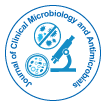

Perspective - (2022)Volume 6, Issue 2
Blastomycosis or blasto is a fungal infection caused by inhaling the spores of the Blastomyces fungus. Only about half of people with the condition have symptoms, which can include fever, cough, night sweats, muscle aches, weight loss, chest pain and feeling tired. Symptoms usually develop between three weeks and three months after inhaling the spores. Most blastomycosis infections affect the lungs. In 25 to 40% of cases, the infection will spread to other parts of the body, such as the skin, bones, or central nervous system. Although blastomycosis is especially dangerous for people with weak immune systems, most people diagnosed with blastomycosis have healthy immune systems.
Blastomyces dermatitidis is found in soil and decaying organic matter such as wood or leaves. Outdoor activities such as hunting or camping in wooded areas increase the risk of developing blastomycosis. There is no vaccine, but the risk of disease can be reduced by not disturbing the soil. Treatment is typically with an azole drug such as itraconazole for mild or moderate disease.
In severe cases, patients are treated with amphotericin B before azole therapy. In any case, azole therapy lasts 6-12 months. Overall, 4%-6% of people who develop blastomycosis die; however, if the central nervous system is involved, this rises to 18%. People with AIDS or taking drugs that suppress the immune system have the highest risk of death, at 25%-40%.
Blastomycosis is endemic in the eastern United States and Canada, particularly in the Ohio and Mississippi River valleys, the Great Lakes, and the St. Lawrence. About 1 to 2 cases per 100,000 per year occur in these areas. Less commonly, blastomycosis is also found in Africa, the Middle East, India, and western North America. Blastomycosis also affects a wide variety of non-human mammals, and dogs in particular are much more likely to contract the disease than humans. The ecological niche of Blastomyces in the wild is poorly understood and it is not known if there are any significant host animals.
Blastomycosis has been around for millions of years, but was first described by Thomas Caspar Gilchrist in 1894. For this reason, it is sometimes called "Gilchrist's disease".
Treatment
According to Infectious Disease Society of America guidelines, severe cases of blastomycosis and cases with Central Nervous System (CNS) involvement are initially treated with amphotericin B, followed by long-term treatment with an azole drug such as itraconazole. In most cases, treatment with amphotericin lasts 1-2 weeks, but in cases of CNS involvement, it may take up to 6 weeks. Cases that do not require treatment with amphotericin B are treated with a long course of an azole drug.
Among the azole drugs, itraconazole is generally the first-line treatment. Voriconazole is often recommended for cases of CNS blastomycosis because of its ability to cross the blood-brain barrier. Other azole drugs that can be used include fluconazole. Ketoconazole was the azole drug first used to treat blastomycosis, but it has largely been replaced by itraconazole because ketoconazole is less effective and less well tolerated by patients. Azole treatment usually lasts at least six months. The cure rate from itraconazole treatment is almost 95%. Relapse is rare, but occurs even after the full course of treatment.
Causes
Blastomycosis is caused by dimorphic fungi of the genus Blastomyces, phylum Ascomycota and family Ajellomycetaceae. In eastern North America, the most common cause of blastomycosis is Blastomyces dermatitidis, but Blastomyces gilchristii has been associated with some outbreaks. In western North America, many cases of blastomycosis are caused by Blastomyces helicus, which most commonly affects immunodeficient people and domestic animals. The species Blastomyces percursus causes many cases of blastomycosis in Africa and the Middle East. In Africa, blastomycosis can also be caused by Blastomyces emzantsi, which is often associated with infections outside the lungs.
In endemic areas, Blastomyces dermatitidis lives in soil and rotten wood near lakes and rivers. Although it has never been directly observed growing in nature, it is thought to grow there as a cottony white mold, similar to that seen in artificial culture at 25˚C. The moist, acidic soil in the surrounding forests harbors the fungus.
Citation: Tiffy I (2022) Treatment of Blastomycosis Infection and its Causes. J Clin Microbiol Antimicrob. 06: 136
Received: 15-Jul-2022, Manuscript No. JCMA-22-20596; Editor assigned: 19-Jul-2022, Pre QC No. JCMA-22-20596 (PQ); Reviewed: 02-Aug-2022, QC No. JCMA-22-20596; Revised: 09-Aug-2022, Manuscript No. JCMA-22-20596 (R); Published: 16-Aug-2022 , DOI: 10.35248/JCMA.22.6.136
Copyright: © 2022 Tiffy I. This is an open-access article distributed under the terms of the Creative Commons Attribution License, which permits unrestricted use, distribution, and reproduction in any medium, provided the original author and source are credited.